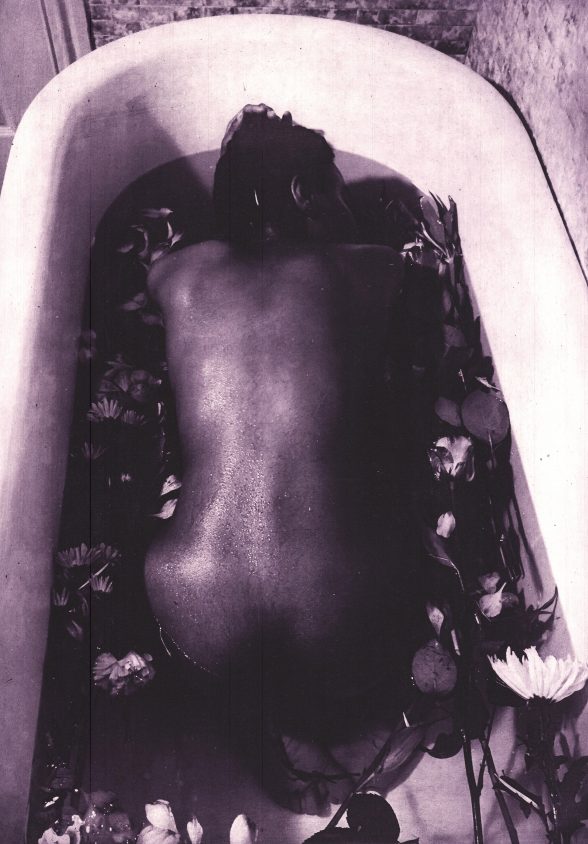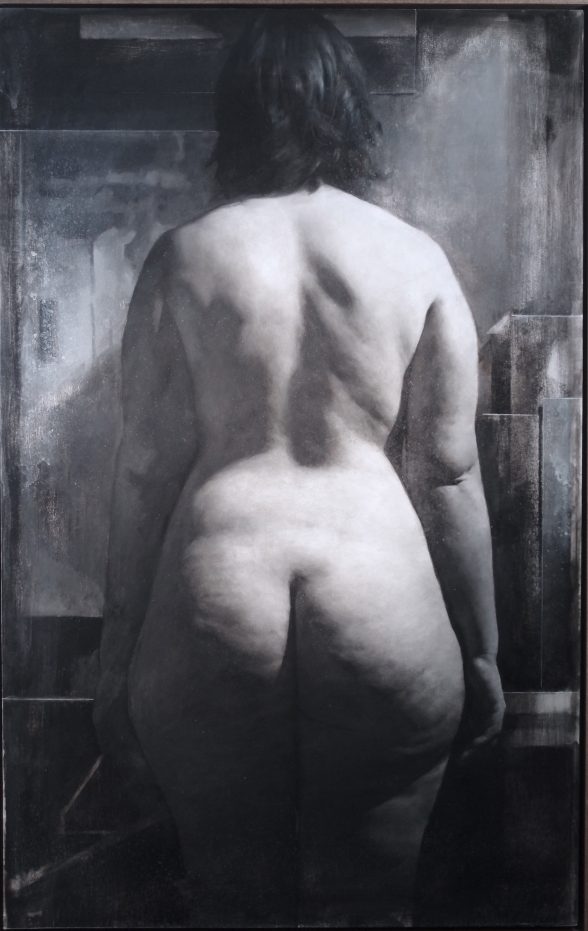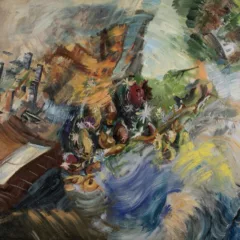Seventy-seven years old and stronger than ever, The Woodmere Annual proves again this year why working with local jurors who have a theme can result in a great exhibition. And, with its online catalog and new podcast feature delving into the jurying of the show, the museum demonstrates its growing commitment to local art and artists. No other Philadelphia museum has chosen such a path.
From more than 600 submissions, a show with 100 works by 76 artists
Juror Syd Carpenter, professor of studio art at Swarthmore College, a distinguished mixed media sculptor, solicited works from local artists “that reference the land, the transience of the body, and the movement of the body through space and time.” More than 600 artists submitted work! Carpenter chose 76 of them, and the exhibition includes some 100 art works in a wide variety of media including ceramics, painting, print, video, sculpture, fabric arts, and assemblage. As all jurors are asked to do, she also included one of her own pieces in the show, together with two works selected from Woodmere’s permanent collection. There are, of course, many local luminaries in the exhibition – artists such as Emily Brown, Barbara Bullock, William Daley, Douglas Herren, Leroy Johnson, Roberto Lugo, Janice Merendino, Michelle Marcuse, Don Nakamura, Andrea Packard, John Sevcik, and Kukuli Velarde.
Brilliant work by Kukuli Velarde and Barbara Bullock
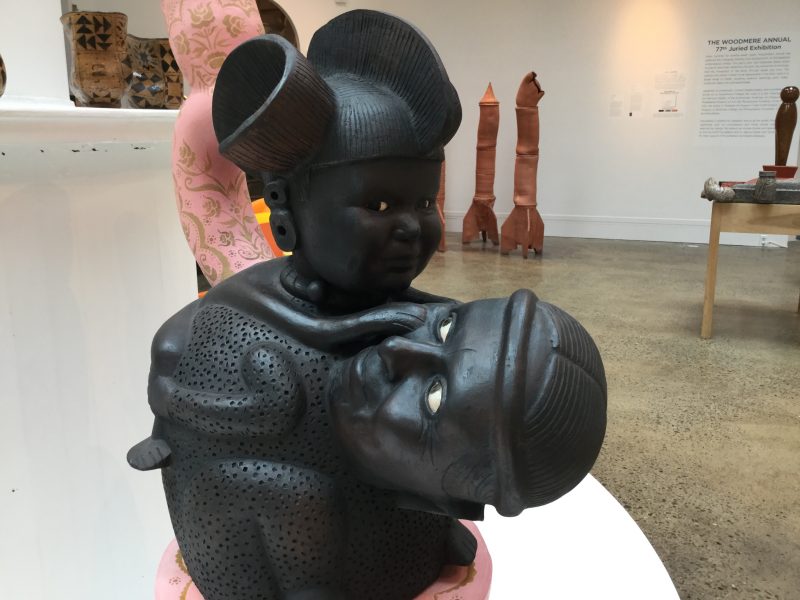
Writing about, even describing, an exhibition of such breadth is, of course, a fool’s errand. It also is painful to single out a handful of works from among so many excellent others. Kukuli Velarde’s magnificent ceramic sculpture, “Saint Anna and the Virgin Mary as a Child,” is, perhaps, the centerpiece of the exhibition, together with Barbara Bullock’s chilling “Trayvon Martin, Most Precious Blood.” Velarde’s complex work weaving iconography from Christian and ancient South American cultures is sensuous and playful. It is a grand monument to the bonds between mothers and children, bonds which have become terribly relevant in an environment in which our government is callously separating children from their asylum-seeking parents at the southern border.
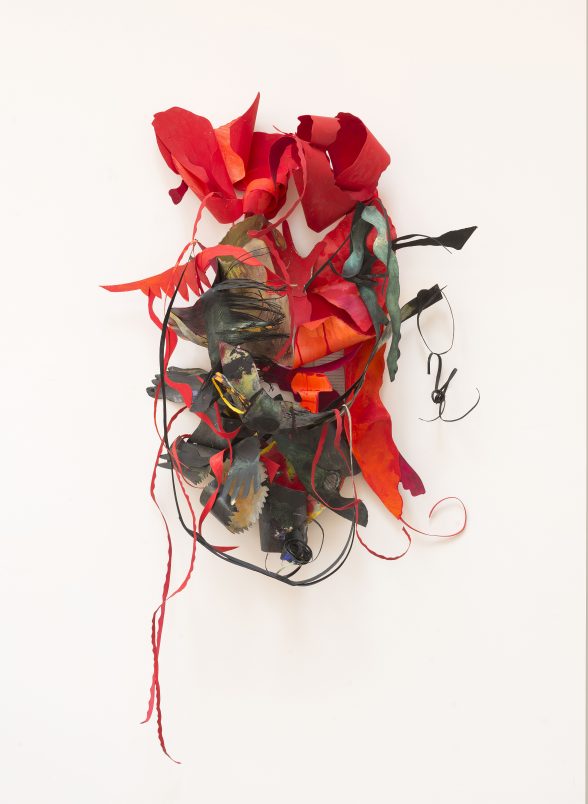

Bullock’s large wall piece sculpted out of cut, curled and colored paper evokes and eulogizes a violent encounter and spotlights the impossible dilemma of young black males in a stand-your-ground society. The piece contrasts sharply and beautifully with another work in the exhibition, Cheryl Tracy’s 2017 photograph, “Shine,” which captures the antithesis of the racist stereotype of the dangerous Black male predator – a young Black male, soft, spiritual, and peaceful, meditating, shining.
Artists of every age
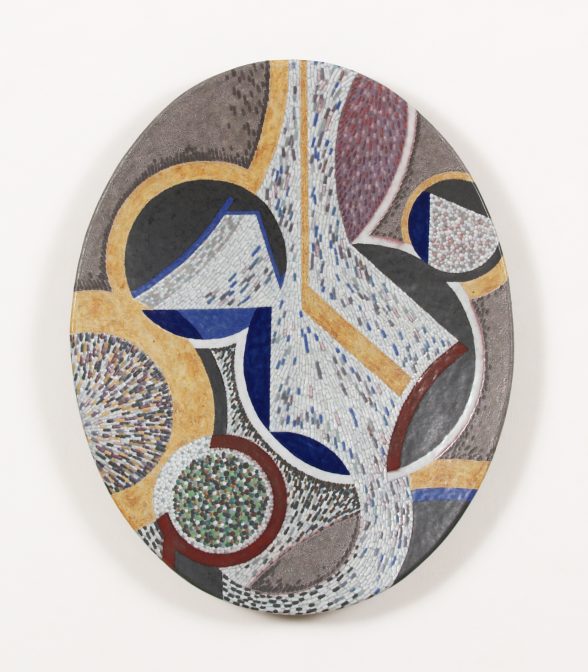
One of the most remarkable features of the exhibition is the age range of artists Carpenter selected. Indeed, there are representatives of the ninety-somethings, the twenty-somethings, and everything in between. Most impressive, perhaps, is the inclusion of a large contingent of artists over the age of sixty who are producing vital, dynamic contemporary work. Have a look, for instance, at Ken Vavrek’s colorful abstract wall piece made of glazed stoneware “Untitled p217.” Vavrek is an artist in his late seventies, and the work dates from 2017!
The exhibit also includes a powerful wall sculpture by thirty-something Anthony Bowers, “Half-Full,” a transparent t-shirt assemblage with protruding belly half-filled with wiggly cloth scraps, which shines a delicate light upon the expanding girth of middle-aged men in our culture of consumption.
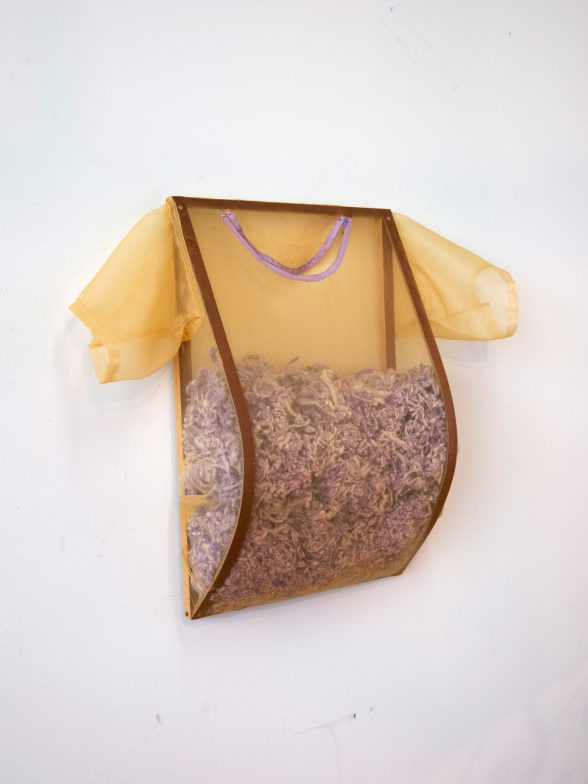
With so many artists, and a broad, somewhat amorphous theme, the exhibition inevitably lacks a degree of overall coherence. What it lacks in coherence, however, it makes up for in variety and sheer talent. It is probably fair to say that pretty much every visitor will find something to admire in the show.
An homage to our soldiers
Ken Derengowski, born in 1974, a fabricator and goldsmith, has three large memorial rings in the Annual, constructed from sterling silver and found objects, which pay homage to art created by soldiers during World War II. The objects depicted by the rings are German mines, radar, and a torpedo, the means of destruction. Each ring is strange and idiosyncratic, masterfully done, and remind us of the terrors posed by war and the sometimes creative efforts of soldiers to survive and adjust to those terrors. Looking at these works made me think about the ubiquitous depersonalization of violence in modern media and video games, which, among other things, dehumanizes and thereby dishonors those on remote front lines, soldiers and civilians alike, who are trapped in the crosshairs of society’s conflicts. By the way, the U.S. Army has an art program. Who knew? Indeed, in 2010-11, the National Constitution Center put on an exhibition of work from that program, entitled Art of the American Soldier.
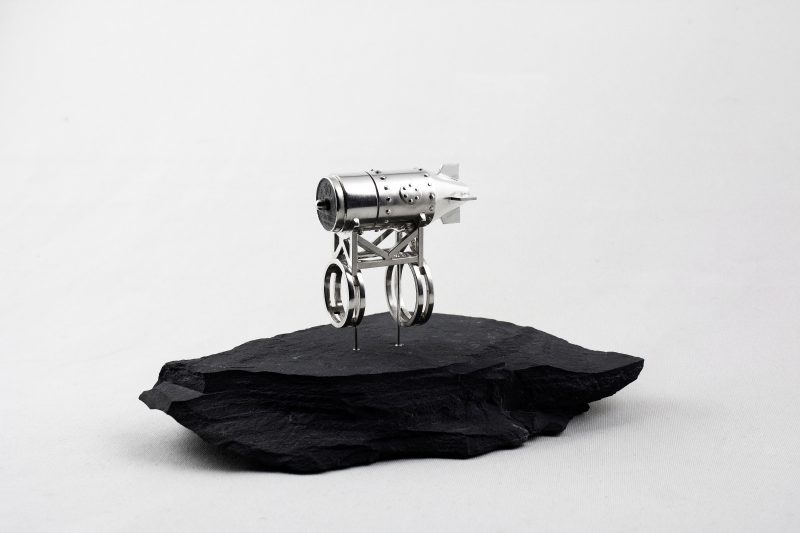
Devil’s Pool
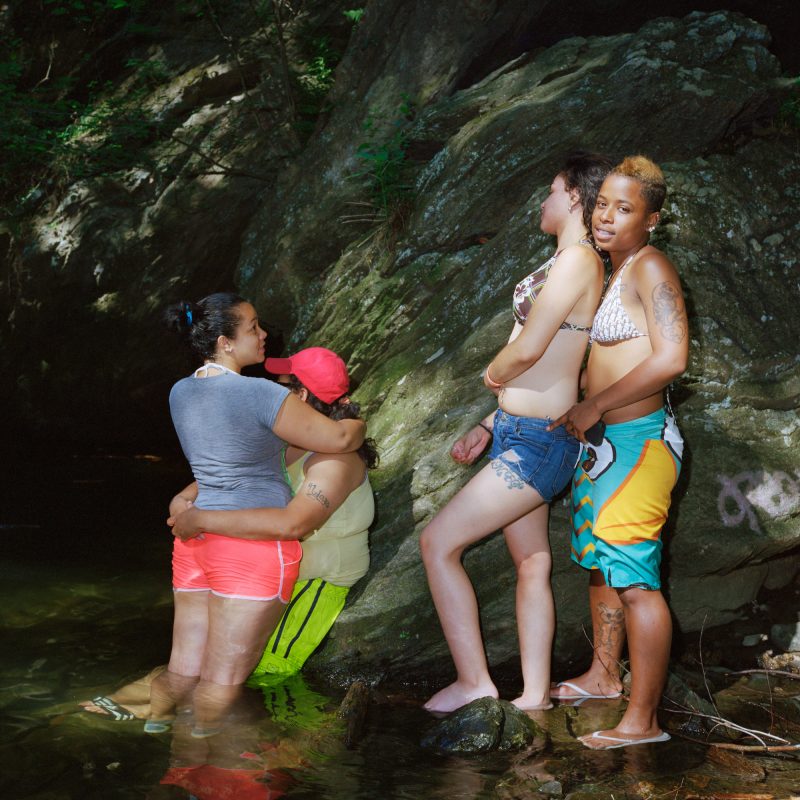
Photographer Sarah Kaufman’s “Devil’s Pool Bathers” highlights a group of four bathers at this legendary, secluded, unsanctioned swimming hole in the Wissahickon Creek. The spot takes its name from an urban myth that the Native American Lenape tribe considered the pool to be an interface between good and evil. The photograph captures two apparently female couples whose love for each other perhaps has been marginalized by the mainstream and whose pleasures have been relegated to this clandestine venue. In the young photographer’s empathetic image, the couples are depicted with compassion and acceptance, unlike the exclusion they might experience elsewhere.
Women facing away from us
There are three pieces in the Annual in which human subjects present their backs to the viewer. I don’t think that the message intentionally relates to the fact that society has in essence turned its back on our artists, but I wondered.
“Join My Swim Team,” is a short video by Yixuan Pan, a Chinese woman in her mid-twenties, in which the artist faces away from the camera – only her head and shoulders are visible — and she vividly describes what it’s like to swim. The metaphoric narrative is presented via headphones in which Chinese and English are heard simultaneously, one language in one ear, the other in the other. The effect is jarring. It reminded me of the challenges faced by immigrants trying to survive in an unfamiliar culture, and to communicate in a language foreign to them.
“Interior,” by Michael Grimaldi, an artist in his mid-forties, is a large, monochromatic drawing, which literally features the nude backside of a woman facing a wall. Of course, there’s nothing new about a painting of a nude woman’s back, particularly by a male artist – even Rubens did it – but the historical representations rarely are presented in shadows, or with the severity invoked by Grimaldi, or with the intention to reflect interiority. The piece almost stands as a rebuke to the ubiquity of male artists’ portrayal of female nudity, and it reflects the heavy burdens placed upon women in our society.
In the large photograph, “Ophelia II,” Sophie Sanders, another artist in her mid-forties, presents a view from above of a woman in a bathtub filled with water and flowers. The piece was inspired, in part, by Sir John Millais’s Pre-Raphaelite painting “Ophelia.” The woman in Sanders’s piece is kneeling, and her back is to the viewer. The image is dark, but the pose is seraphic. The bathtub serves as the woman’s sanctuary. I thought of this work as the female equivalent of Cheryl Tracy’s “Shine,” referenced above. Two pieces which reveal a realm of peace and harmony which exists beneath the dark shadows that society too often casts upon people of color and upon women.
Boathouse Row
Lastly, Bernadette Andrews’s “Boathouse Row” should not be overlooked. This is a small needlework by a seventy-something artist, who calls her process “painting with thread.” We’ve all had our fill of images of Boathouse Row, but this deceptively simple rendering of the Philadelphia landmark, in muted cotton and silk, which appears in layers, is extraordinary.
The Woodmere Annual is an exhibition well worth a trip to Chestnut Hill, and will be up through September 3, 2018, with a closing reception on Sunday, Sept. 2, 2:00 PM – 4:00 PM. There’s a podcast about the exhibit on the museum’s website, as well as copy of the online catalogue. [Ed. Note: For more about the juror of the 77th Annual Woodmere show, listen to Artblog’s 2012 podcast with Syd Carpenter here.]



